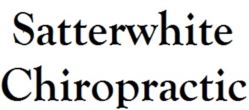Oxford Spinal Manipulation and VNS May Help Gastroparesis (Stomach Issues)
Stomach pain and related issues can upset more than the stomach. The body is filled with nerves from the head to the toes, and the stomach is at the center of it all! The vagus nerve is one of the biggest nerves spreading from the brainstem to the abdomen. What’s in the middle of the abdomen? The stomach! (Talk about a brain-gut connection!) Gastroparesis sufferers’ days are disturbed by nausea, pain, delayed stomach emptying, and even vomiting. (1) Satterwhite Chiropractic shares new studies about some less invasive potential treatments like vagal nerve stimulation and even spinal manipulation that may help calm the stomach and ease the upset for Oxford stomach pain patients.
GASTROPARESIS
For those who suffer with gastroparesis, the symptoms may consist of any number of problems they’d like to not have. Researchers explained that any number of factors combined can trigger gastroparesis and disrupt quality of life. The metabolic feedback connection between the gut and brain have been described and tied to the nervous system, specifically the vagal nerve that extends throughout the body. Regardless of what causes gastroparesis, most patients demonstrated problems with the brain-gut innervation via the vagus nerve and/or intestinal nervous system. (2,3) Medical treatment so far has been imperfect in its effect due to the complexity of physiology of gastroparesis. (1) Oxford gastroparesis patients at Satterwhite Chiropractic appreciate having some options that may help them with this condition.
TREATMENTS FOR GASTROPARESIS: VNS
Researchers noted that medical therapy has been limited in its ability to help. Vagal nerve stimulation (VNS) was said to be promising though. More invasive surgical stimulation of the vagus nerve has been attempted with some success. New, non-invasive methods included using a self-administered vagal nerve stimulator that reported improved gastric emptying for some. (1) Such a stimulator simulated the surgical cervical vagal nerve stimulation. (4) Stimulating vagal afferents with transcutaneous (through the skin) auricular (ear) vagus nerve stimulation (taVNS) improved gastric frequency and controlled digestion. To the researchers, this showed that brain stimulation influenced gut function. (2) They are connected, the brain and the gut! Adding slow breathing to taVNS demonstrated promise in treating anxiety, chronic pain, depressive disorders, insomnia, and cardiovascular diseases, too. Researchers wrote that slow breathing normalized vagus nerve activity and decreased psychophysiological stimulation making it useful in behavioral medicine. (4) Satterwhite Chiropractic offers that VNS may interest Oxford chiropractic patients who experience gastroparesis and even chronic pain associated with back pain and/or neck pain.
SPINAL MANIPULATION
Your Oxford chiropractor is here to help with chiropractic skills and treatments to assist gastroparesis sufferers, too! And they come in all ages – adults and kids. Pediatric functional abdominal disorders involved struggles with digestion issues. Children with functional abdominal disorders have digestion and/or nausea issues after eating. Drugs are often prescribed. Non-drug treatments like stimulation to the external ear (an area the vagal nerve reaches), electrical stimulation, diet changes, pro/prebiotics, etc., also now include acupuncture, yoga, and spinal manipulation. (5) That is our forte at Satterwhite Chiropractic: spinal manipulation!
CONTACT Satterwhite Chiropractic
Listen to the PODCAST with Dr. James Cox on the Back Doctors Podcast with Dr. Michael Johnson as he explains the vagus nerve, its influence on the nervous system, and how to mix its stimulation with the Cox® Technic System of Spinal Pain Management in relieving pain.
Make your next Oxford chiropractic appointment with Satterwhite Chiropractic. Bring your pain issues to us. We will work up a treatment plan to help!
